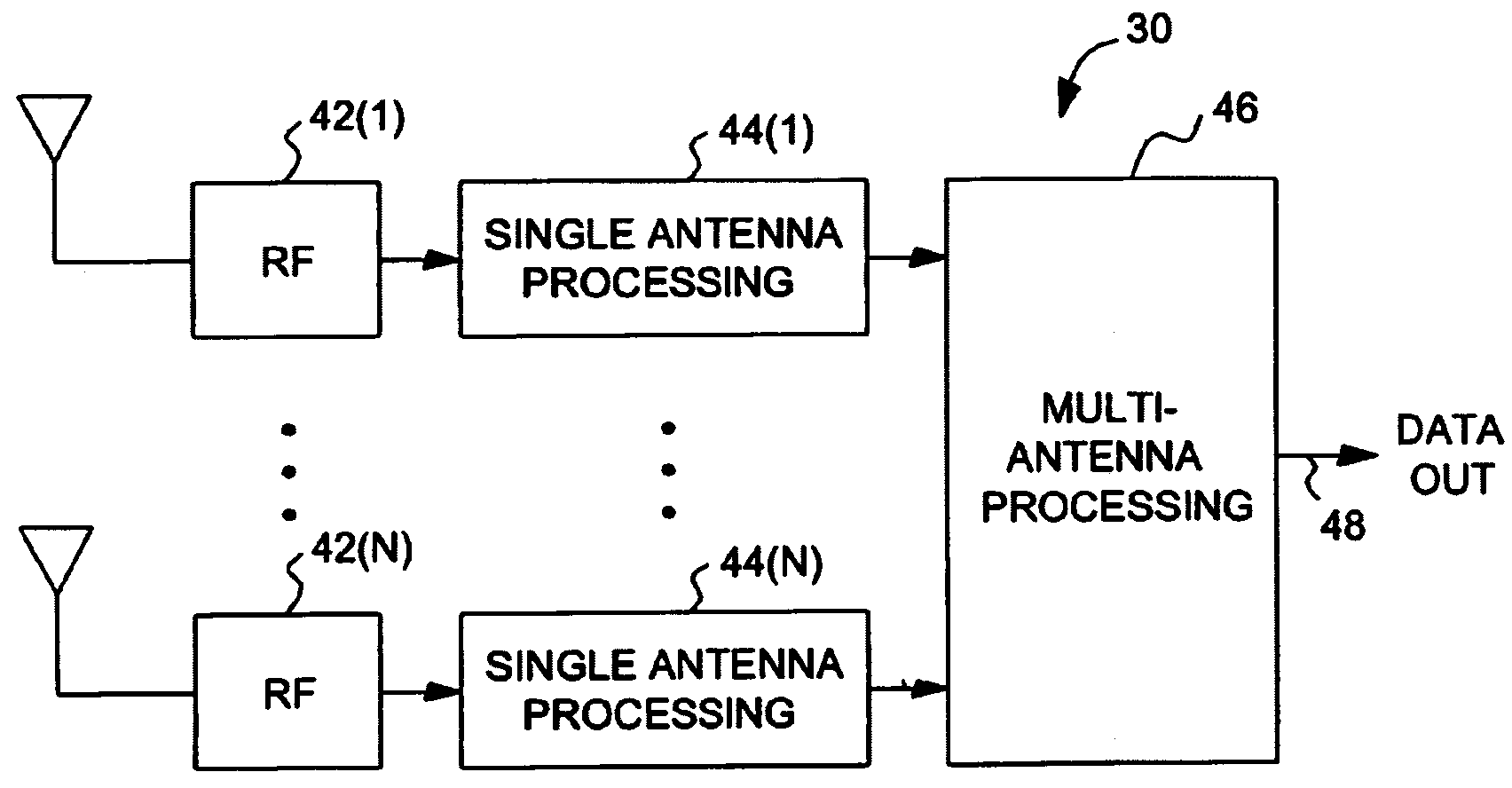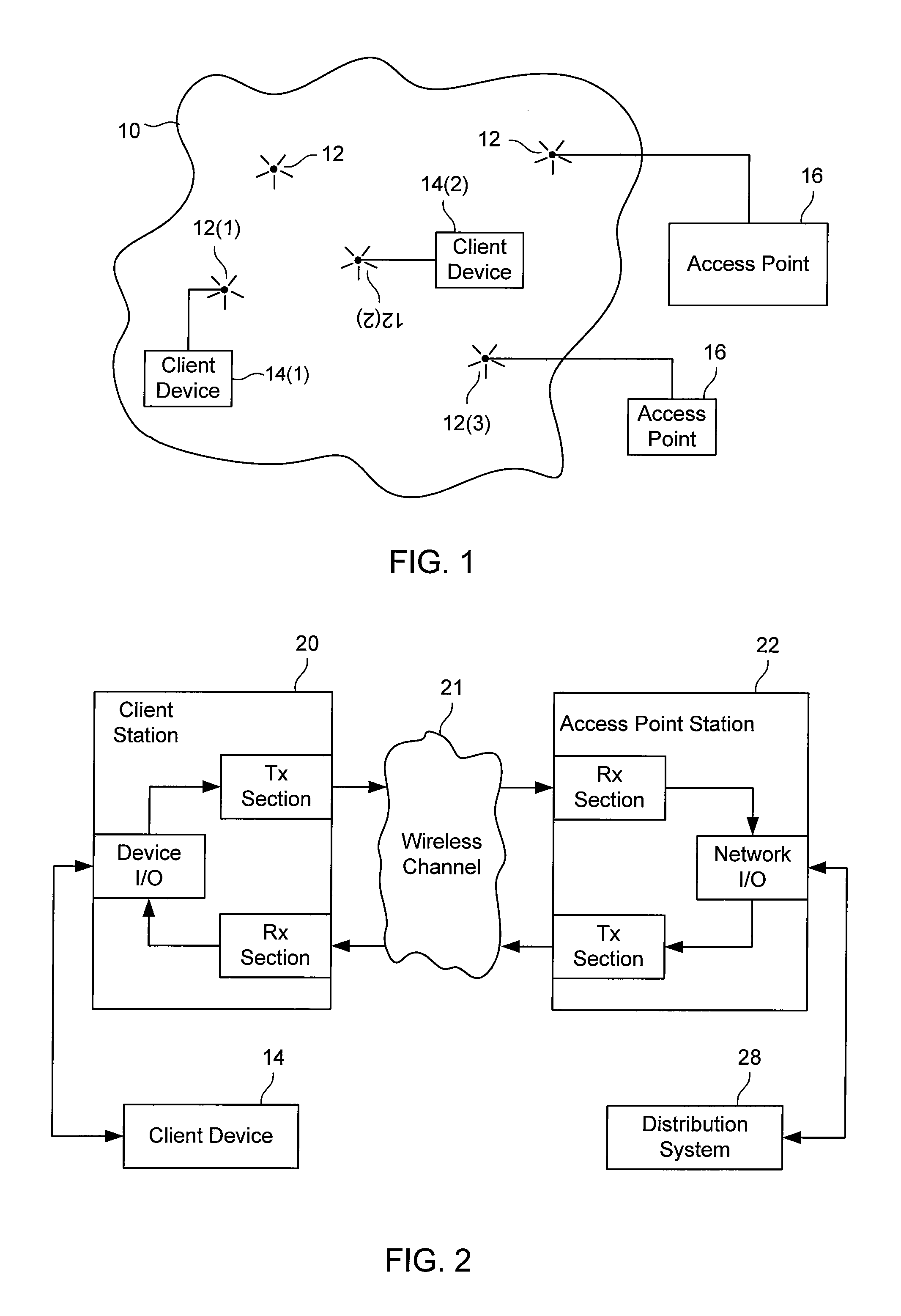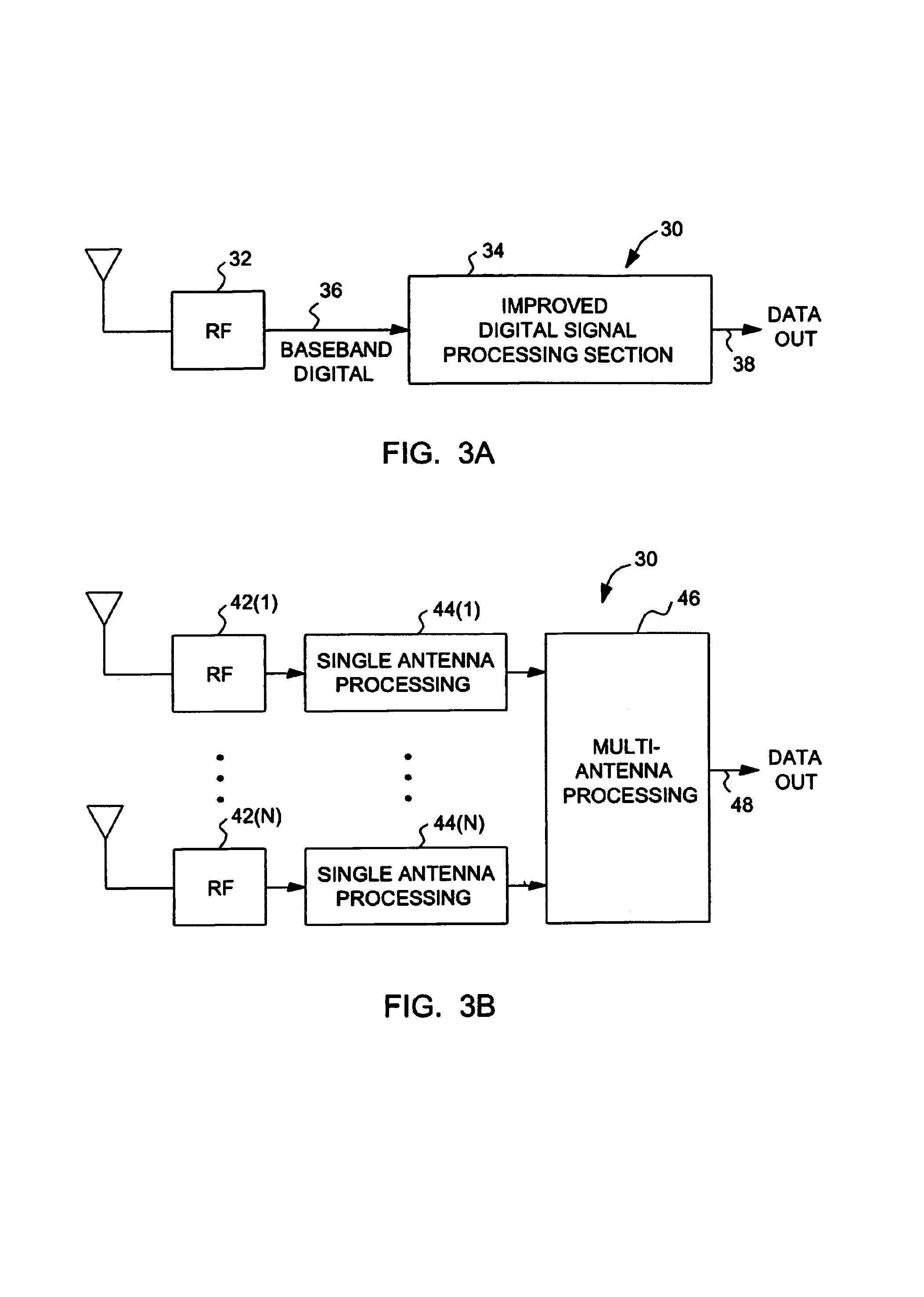Spacetime equalization in a wireless receiver
a wireless receiver and spacetime equalization technology, applied in the field of spacetime equalization in a wireless receiver, can solve the problems of increasing the time extent of the symbol, the complexity of the search relates to the number, and the effort needed to correctly transmit and receive data over a wireless channel
- Summary
- Abstract
- Description
- Claims
- Application Information
AI Technical Summary
Problems solved by technology
Method used
Image
Examples
example
[0085]An example implementation will now be described, with reference to various figures, for a given channel. From this example, filter coefficients for feedforward and feedback matched filters (elements 112 and 104 in FIG. 11) for a minimum distance DFE receiver are determined from a given channel characteristic. Consider a channel with z-transform shown in Equation 9. The channel matched filter is for that channel would be as shown in Equation 10.
H(z)=1+0.5z−1 (Equ. 9)
H*(1 / z*)=0.5z+1=z(0.5+z−1) (Equ. 10)
[0086]To compute the whitening filter, a Levinson recursion might be used, but other approaches can be used. The autocorrelation of the channel response is as shown in Equation 11. A Levinson recursion solves the system shown in Equation 12 for the forward prediction-error coefficients {ai}.
[0087]R(k)=1.25,.5,0,0,…(Equ.11)(R(0)R(1)R(2)…R(1)R(0)R(1)…R(2)R(1)R(0)…⋮⋮⋮⋰)(1a1a2⋮)=(σe200⋮)(Equ.12)
[0088]A forward prediction-error filter (an intermediate step in building fi...
PUM
 Login to View More
Login to View More Abstract
Description
Claims
Application Information
 Login to View More
Login to View More - R&D
- Intellectual Property
- Life Sciences
- Materials
- Tech Scout
- Unparalleled Data Quality
- Higher Quality Content
- 60% Fewer Hallucinations
Browse by: Latest US Patents, China's latest patents, Technical Efficacy Thesaurus, Application Domain, Technology Topic, Popular Technical Reports.
© 2025 PatSnap. All rights reserved.Legal|Privacy policy|Modern Slavery Act Transparency Statement|Sitemap|About US| Contact US: help@patsnap.com



